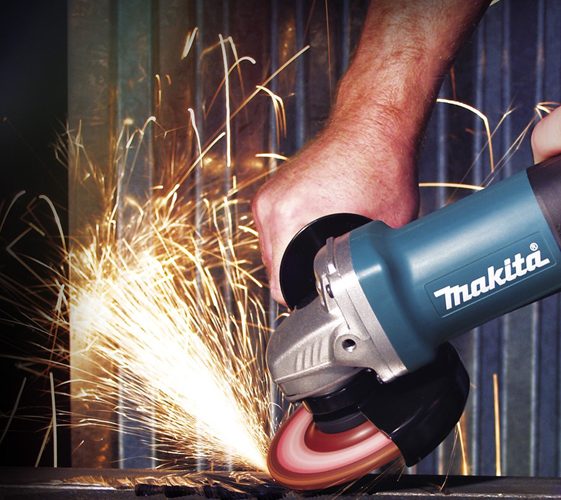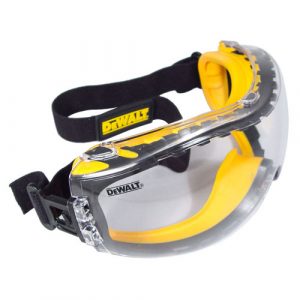Take a look at six important things you can do to make your knifemaking a little easier.
1Not one guy in a hundred knows to tighten down all three holes on a drill chuck. Guys just chuck up a drill bit, tighten down one hole and call it good. Then you wonder why your drill bit slips in the chuck. Hand-tightened chucks are even worse. You have to buy more expensive square shanked bits to make them work. A conventional Jacob’s three-hole chuck is designed to have all three holes tightened. This is because each hole controls one of the teeth in the chuck. Tightening down one hole is like changing your tire and only tightening one lug nut.
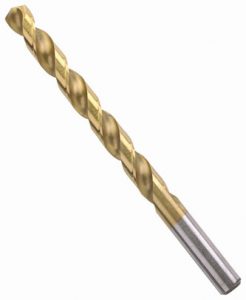
A 135-degree split-point drill bit is the state of the art in drilling. Titanium-nitrite coatings were in use on drill bits long before the technique became popular on knife blades.
2When you drill metal, only buy 135-degree split point bits (it will say so on the package). This is because you can self-start the bit without a starter punch. Using a starter punch does what is called “work hardening” the piece. This technique will prematurely dull your bits. The split-point bit has four cutting edges instead of two and is self-starting with moderate pressure. You can even self-start it on a rounded surface. This is a real innovation in drill-bit technology since the old-school 90-degree bit with only two cutting edges was around.
3Another advance in the metallurgical arts in drill-bit technology is the application of titanium nitride, commonly referred to as TiNi in the industry. (It has a characteristic gold color on the shank.) This dramatically reduces the frictional coefficient, thus making the drill bit drill more cool, thus insuring the longevity of your bits. Titanium was a metal compound formulated by the Russians. Back in the 60s, when our aircraft engineers developed the famous SR-71 spy plane that literally flew faster than a bullet, they had to have titanium to keep the plane from melting. We imported the titanium from the Russians to build the plane that we used to spy on them. They never knew that they were helping us to spy on them.
4When you drill, drill on a slow speed with a lubricant. This is how manufacturing operations are able to drill several hundred holes with the same bit without having to resharpen or replace the bit. If you drill on high speed, your bit will only be good for one or two holes.
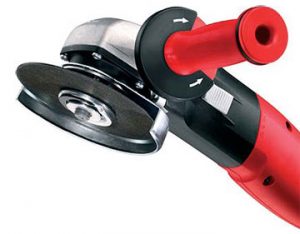
The author recommends clamping a blade into a vise and using a sanding disc for some grinding, using a grinder such as the Milwaukee model.
5I have a new technique for you to use when shaping a knife blank. Instead of holding the blank in your hand and manipulating it, chuck the blank into a vise and use a mini grinder outfitted with a sanding disc instead of a grinding wheel. You will find that it is safer and that you will be able to finesse much easier on fine shaping. You will also have much more control and little likelihood of nicking yourself on a grinding wheel.
When you are shaping your blank, instead of conventional safety glasses, which are not very safe, use new safety goggles that completely enclose your eyes. DeWalt has come out with safety goggles with ultra-soft vinyl that fits comfortably to your face. Additionally, they are very well-ventilated so that they don’t fog up even under very hot working conditions.
6For those of you who use wood to make handles for your knife, I have a great suggestion from the industry — catalyze the varnish. Catalyzing is a process by which you cure the varnish and harden it with heat. Think of the burned-on grease on the bottom of cooking pots. It is nearly impossible to scrub off. Heat does the same thing to varnish. Bake your handles at 300°F for 15 minutes. You also get the advantage of being able to re-coat as soon as the handle cools down in about 10 minutes. Not only can you quickly re-coat, but it eliminates the need to do intermediate sanding between coats. You can even set yourself apart by using this technique in your advertising and description of how you fabricate knives to persuade buyers to purchase their knives from you.

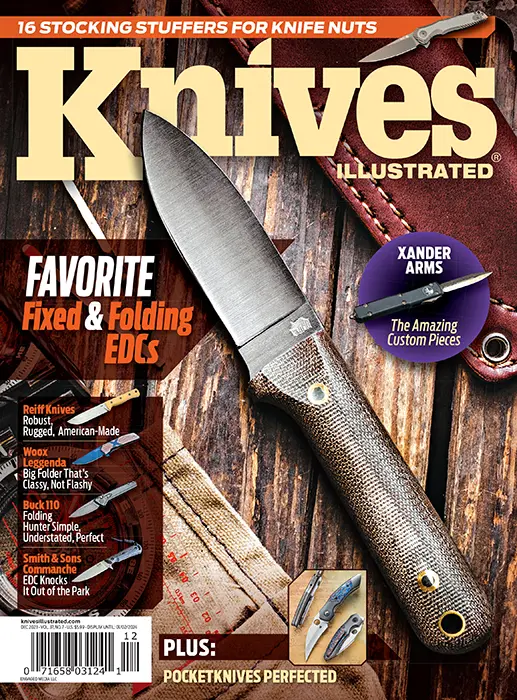 Subscribe / Back Issues
Subscribe / Back Issues